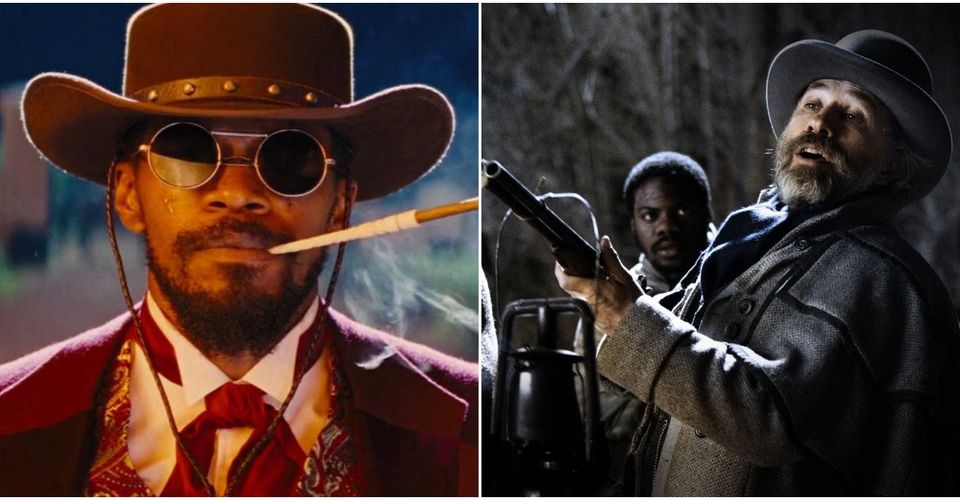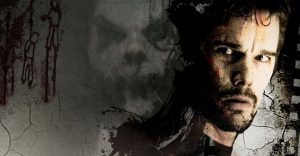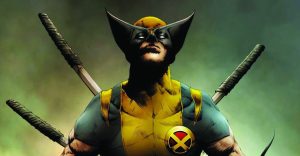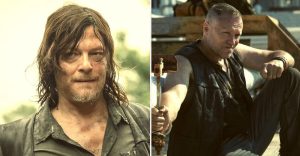Django Unchained: 5 Western Tropes It Subverted (& 5 It Adhered To)

Although Quentin Tarantino didn’t make a full-blown western until 2012’s Django Unchained, the influence of the spaghetti western can be seen all over non-western Tarantino movies like Pulp Fiction and Kill Bill. Inglourious Basterds was initially conceived as a spaghetti western set during World War II, hence the working title Once Upon a Time in Nazi-Occupied France.
When he did try his hand at a proper western, it was suitably subversive. For one, it wasn’t set in the West; it was set in the South, during the most troubling time in American history. There are certain genre tropes that Tarantino adhered to and others he subverted.
10 Subverted: The Western Setting

Tarantino is hesitant to even call Django Unchained a western, because it doesn’t take place in the West; it takes place in the antebellum South. As a result, despite featuring all the iconography of a western, Tarantino has termed the movie a “southern.”
Sergio Corbucci’s warts-and-all portrayal of the American frontier inspired Tarantino to make a spaghetti western tackling the ugliest chapter in U.S. history.
9 Adhered To: Brutal Violence

The violence in westerns is brutal — particularly in spaghetti westerns, which Django specifically draws from — so it’s no surprise that Tarantino’s first western is gorier than the average horror movie.
There are a ton of shootouts in the movie, and in each one, every single gunshot results in a cartoonish explosion of blood.
8 Subverted: “Cowboys & Indians”

The phrase “cowboys and Indians” has become outdated, let alone the trope itself. A lot of traditional westerns paint Native Americans as murderous villains and the white people who slaughter them as heroes. The genre started to die out when fans realized how skewed and racist this was.
Movies that address the racial politics of the genre, like the satire Blazing Saddles, can expose the truth behind the myths. Tarantino’s focus on the slavery era is certainly challenging, but at least it shines a light on past indiscretions instead of ignoring them.
7 Adhered To: Antiheroes

Very few westerns feature protagonists that are 100% good. Even if the movie depicts them as clear-cut heroes, like a lot of John Wayne’s starring vehicles, the characters often fall into a moral gray area as they exact vigilante justice.
Spaghetti westerns like A Fistful of Dollars and the original Django wear their characters’ antihero status like a badge of honor, and so does Django Unchained — although the fact that the victims are slaveowners makes its violence a lot more justified.
6 Subverted: Traditional Score

Most westerns will have a traditional score composed by one of the greats, like Ennio Morricone or Luis Bacalov, but in true Tarantino fashion, Django Unchained has an eclectic soundtrack made up of licensed music and anachronistic pieces.
There are some traditional scores in Django Unchained — including some tracks composed by Morricone and Bacalov themselves — but there are also folk classics like Jim Croce’s “I Got a Name” and a Rick Ross hip-hop track titled “100 Black Coffins.”
5 Adhered To: Bounty Hunter Protagonist

Bounty hunters are one of the western genre’s go-to protagonists — they can be seen in the Dollars trilogy, Joe Kidd, The Great Silence, Bring Me the Head of Alfredo Garcia, even the original 1966 Django movie — because someone who spends their days tracking down wanted criminals is a compelling character to follow.
In Django Unchained, the title character is freed by a bounty hunter who teaches him his trade. Tarantino would reuse a bounty hunter protagonist in The Hateful Eight, which was initially conceived as a Django sequel called Django in White Hell.
4 Subverted: Lone Wolf Protagonist

While Django Freeman is a bounty hunter, he’s not a lone wolf like Franco Nero’s Django or Clint Eastwood’s Man with No Name. He has a sidekick in the form of Dr. King Schultz, the guy who frees him and trains up him to be the sharpest shooter in the South.
However, Django is a lone wolf by the end of the movie, as Dr. Schultz’s pride prevents him from shaking Calvin Candie’s hand and gets him killed, massively screwing up the quest to save Broomhilda.
3 Adhered To: Revenge

Revenge is a common theme in the western genre, and Django Unchained’s storyline of a freed black slave mowing down white slavers with a revolver is pure revenge fantasy.
Then again, revenge is also a common theme in Tarantino’s own work — Kill Bill is a revenge story, Reservoir Dogs is a revenge story, Pulp Fiction has a dash of revenge in the pawnshop basement scene — so this can also be seen as the director adhering to his own style.
2 Subverted: Typical Storylines

Typically, a western will revolve around a bank heist or a cattle drive or a train robbery. But Django Unchained has a storyline that is entirely its own.
The story of Django’s journey to liberate his enslaved wife feels more like a fairy tale than a western, while the setting of a plantation is unique to the genre.
1 Adhered To: Good Triumphs Over Evil

Apart from a handful of bleak revisionist westerns, most westerns end with the hero defeating the bad guy. Since these movies are essentially myths, good triumphing over evil in the end is a prerequisite.
At the end of Django Unchained, the title character defies the odds to return to Candyland and save his wife. If the slavers had won, it would’ve been a pretty disappointing movie.
About The Author


















